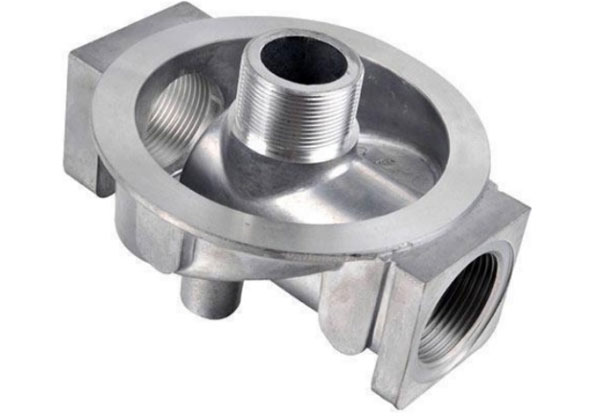Why Is Die Casting the Preferred Choice for High-Precision Manufacturing?
2025-09-24
Die casting is one of the most widely used manufacturing processes for producing metal components with high accuracy, repeatability, and durability. At its core, die casting involves forcing molten metal into a precisely engineered mold cavity under high pressure. Once cooled and solidified, the part is ejected, creating a component with excellent dimensional stability and a smooth surface finish.
The process relies heavily on advanced tooling and automation. Unlike other casting methods such as sand casting or investment casting, die casting provides tighter tolerances and faster cycle times, making it the go-to solution for industries that demand mass production without compromising quality.
The Die Casting Process Step by Step:
-
Mold Preparation – The die, made from high-grade steel, is cleaned, lubricated, and prepared to handle molten metal injection.
-
Molten Metal Injection – Aluminum, zinc, magnesium, or copper alloys are heated to specific melting points and injected into the die cavity at high pressure.
-
Cooling and Solidification – The molten metal rapidly cools inside the mold, ensuring dimensional accuracy and structural integrity.
-
Part Ejection – Once solidified, ejector pins release the part from the mold.
-
Trimming and Finishing – Excess material (flash) is removed, followed by optional finishing processes such as machining, coating, or polishing.
This precise and repeatable cycle makes die casting particularly valuable for industries such as automotive, aerospace, consumer electronics, industrial machinery, and telecommunications.
Why Choose Die Casting Over Other Manufacturing Methods?
In today’s global market, manufacturers demand cost-effective solutions that balance performance, speed, and sustainability. Die casting stands out because it delivers on all three.
Key Advantages of Die Casting:
-
High Dimensional Accuracy – Achieves tolerances within ±0.1 mm, reducing the need for post-machining.
-
Complex Shapes with Thin Walls – Enables the production of intricate geometries that are difficult with machining or forging.
-
Exceptional Surface Finish – Produces smooth surfaces suitable for plating, painting, or powder coating.
-
Mass Production Efficiency – High-speed cycles make it ideal for producing millions of identical parts.
-
Material Versatility – Works with lightweight metals like aluminum and magnesium, as well as durable alloys like zinc and copper.
-
Strength and Durability – Creates parts with excellent mechanical properties and resistance to wear.
-
Reduced Waste – Minimizes material scrap compared to machining processes.
Applications Across Industries:
-
Automotive: Engine blocks, transmission cases, steering components.
-
Aerospace: Brackets, housings, and lightweight frames.
-
Consumer Electronics: Smartphone frames, laptop housings, and connectors.
-
Industrial Equipment: Pump housings, motor covers, and tool components.
By reducing cycle times and ensuring quality, die casting offers companies a competitive advantage in high-demand markets.
How Do Material and Process Parameters Impact Die Casting Quality?
The success of die casting depends on careful control of process parameters and alloy selection. Below is a summary of standard die casting parameters that professionals monitor to achieve consistent results.
Die Casting Process Parameters
| Parameter | Standard Range | Impact on Quality |
|---|---|---|
| Injection Pressure | 30–120 MPa | Ensures metal fills the cavity completely, avoiding voids. |
| Injection Speed | 0.3–5 m/s | Higher speed reduces cold shuts and surface defects. |
| Mold Temperature | 150–300°C | Maintains metal fluidity, prevents premature solidification. |
| Cooling Time | 10–30 seconds (depending on part) | Influences cycle speed and structural uniformity. |
| Alloy Melting Point | Al: 660°C, Zn: 420°C, Mg: 650°C | Determines process energy and cooling requirements. |
| Tolerance Achieved | ±0.05–0.1 mm | Provides precision for critical applications. |
Alloy Considerations:
-
Aluminum Alloys – Lightweight, corrosion-resistant, suitable for automotive and aerospace.
-
Zinc Alloys – High strength and ductility, excellent for intricate designs.
-
Magnesium Alloys – Lightest structural metal, used in electronics and aerospace.
-
Copper Alloys – Superior conductivity, used in electrical and plumbing components.
By selecting the right alloy and process configuration, manufacturers can fine-tune die casting to match product requirements, whether for lightweight strength, corrosion resistance, or electrical performance.
What Does the Future of Die Casting Look Like?
As industries move toward lightweighting, sustainability, and automation, die casting continues to evolve. Innovations in materials, tooling, and digital integration are expanding its capabilities.
Emerging Trends in Die Casting:
-
Lightweight Automotive Solutions – As electric vehicles (EVs) rise, manufacturers demand lighter yet stronger components. Die casting enables large structural aluminum parts, reducing vehicle weight and improving efficiency.
-
Sustainability and Recycling – Over 95% of aluminum die-cast scrap can be recycled, supporting circular manufacturing.
-
Hot-Chamber vs Cold-Chamber Advancements – Modern machines optimize cycle speeds and energy consumption for both processes.
-
3D Printing in Tooling – Hybrid manufacturing allows faster prototyping and mold customization.
-
Smart Manufacturing (Industry 4.0) – IoT-enabled die casting machines monitor parameters in real time, ensuring predictive maintenance and reducing downtime.
Long-Term Outlook:
The global die casting market is projected to grow significantly as industries push for mass customization, lightweight materials, and precision engineering. Companies that adopt advanced die casting technologies will be positioned to dominate in sectors such as EVs, aerospace, and high-end consumer electronics.
Frequently Asked Questions (FAQ)
Q1: What makes die casting better than machining?
Die casting is faster, more cost-efficient for mass production, and allows complex designs that machining alone cannot economically achieve.
Q2: How long does a die casting mold last?
A high-quality steel mold typically lasts between 100,000 to 1,000,000 shots, depending on alloy type, part complexity, and maintenance.
Q3: Can die casting reduce overall manufacturing costs?
Yes. Despite higher initial tooling costs, die casting reduces per-unit cost through fast cycle times, minimal waste, and reduced post-processing.
Why Partner with DS for Die Casting Solutions?
Die casting is not just a manufacturing method—it is a strategic solution for companies seeking precision, scalability, and durability. By leveraging advanced alloys, optimized process control, and future-driven innovations, die casting continues to set the standard for high-performance component production.
At DS, we specialize in delivering customized die casting solutions that meet the most demanding industry requirements. From automotive to electronics and industrial machinery, our expertise ensures your products achieve the highest standards of quality and reliability.
If you are looking for a trusted partner to bring your die casting projects to life, contact us today to learn how DS can support your manufacturing success.



